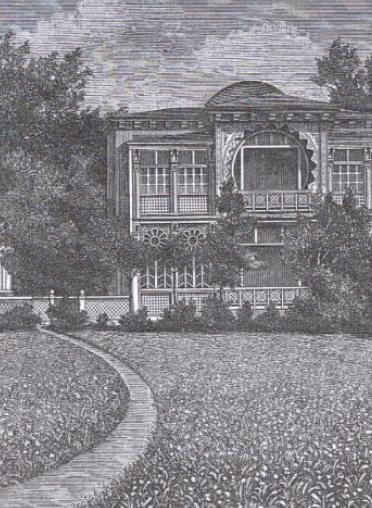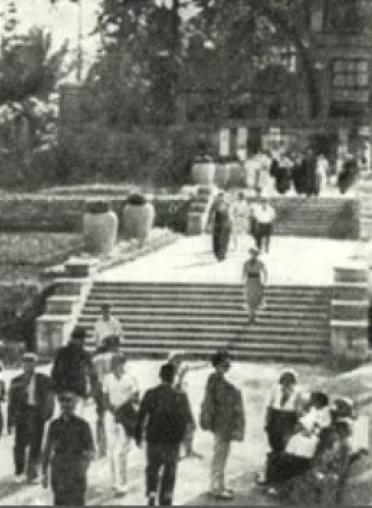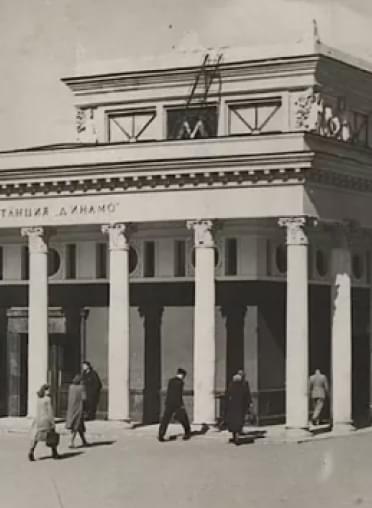
Dynamo Park
Until the beginning of the 20th century, this territory was a sparsely populated area located far from the city. It was crossed by a road laid in the 14th century and leading from Moscow to Tver and further to Veliky Novgorod. It was this road, which passed through empty lands, fields, forests and meadows, that set the direction for the modern highway and the most important transport artery of the capital - Leningradsky Prospekt.
In 1775 - 1783, on the northern side of the Great Petersburg Road on the purchased palace land according to the project of the architect M.F. Kazakov, the Petrovsky Travel Palace was built, replacing the former travel palace in the village of Vsesvyatsky, erected at the beginning of the 18th century. The palace served as the last stop before the solemn entry into the capital of the capital during the visit to Moscow by the imperial family.
In 1775 - 1783, on the northern side of the Great Petersburg Road on the purchased palace land according to the project of the architect M.F. Kazakov, the Petrovsky Travel Palace was built, replacing the former travel palace in the village of Vsesvyatsky, erected at the beginning of the 18th century. The palace served as the last stop before the solemn entry into the capital of the capital during the visit to Moscow by the imperial family.

1827
After the construction of the Petrovsky Palace was completed, the territory adjacent to it also changed: a park with a three-beam system of alleys was laid out behind the palace, and the palace itself was surrounded by a grove in which summer cottages and estates of noble families were located.
In 1827 architect A.A. Menelas developed a project for the redevelopment of Petrovsky Park, which included a new territory, southeast of the palace and park ensemble. After the project was implemented in the 1830s, the park became a favorite place for Muscovites to relax in the countryside. At the beginning of the 20th century, Petrovsky Park, which was considered a suburb of the capital, was surrounded by about 500 dachas, several restaurants known throughout Moscow, a summer theater and a film studio.
In 1827 architect A.A. Menelas developed a project for the redevelopment of Petrovsky Park, which included a new territory, southeast of the palace and park ensemble. After the project was implemented in the 1830s, the park became a favorite place for Muscovites to relax in the countryside. At the beginning of the 20th century, Petrovsky Park, which was considered a suburb of the capital, was surrounded by about 500 dachas, several restaurants known throughout Moscow, a summer theater and a film studio.

20th century
By the beginning of the 20th century, the once great Petrovsky Park gradually fell into decay. In 1920, the Petrovsky Travel Palace was transferred to the Air Force Engineering Academy. NOT. Zhukovsky, which was located here before the transfer of the palace and park ensemble in 1997 to the administration of the city of Moscow.
In 1928, in the southeastern part of the park, behind the Theater Alley, the first stage of the Dynamo stadium was erected. According to the original project, developed by A.Ya. Langman, L.Z. Cherikover and D.M. Iofan, the stadium looked like a giant horseshoe, open on the east side. The creation of a significant stadium visually separated the southeastern part of Petrovsky Park from the palace and park ensemble, which served as the beginning of the independent development of the territory in question.
In 1928, in the southeastern part of the park, behind the Theater Alley, the first stage of the Dynamo stadium was erected. According to the original project, developed by A.Ya. Langman, L.Z. Cherikover and D.M. Iofan, the stadium looked like a giant horseshoe, open on the east side. The creation of a significant stadium visually separated the southeastern part of Petrovsky Park from the palace and park ensemble, which served as the beginning of the independent development of the territory in question.

1938
In 1938, the Dynamo metro station was opened on Leningradsky Prospekt near the western stand of the stadium. In the design of the underground vestibule of the station, porcelain bas-reliefs made according to the samples of the sculptor E.A.Yanson-Manizer were used. The main theme of architecture is Soviet sport.
In 1934, the architect L.Z. Cherikover developed a project for the reconstruction of the stadium and the redevelopment of Petrovsky Park. This is how the Park of Physical Culture and Recreation "Dynamo" appeared with renewed lines of alleys and paths, full of sculptural and small architectural forms, characteristic of the period when Soviet architecture turned to the classical heritage.
This period was the heyday of the territory of the stadium «Dynamo».
In 1934, the architect L.Z. Cherikover developed a project for the reconstruction of the stadium and the redevelopment of Petrovsky Park. This is how the Park of Physical Culture and Recreation "Dynamo" appeared with renewed lines of alleys and paths, full of sculptural and small architectural forms, characteristic of the period when Soviet architecture turned to the classical heritage.
This period was the heyday of the territory of the stadium «Dynamo».

1980
A well-thought-out and implemented sports and park ensemble has developed here, filled with various sports and recreation facilities. An atmosphere of healthy spirit reigned here, which became the key to many glorious victories and sports achievements under the symbol of the «Dynamo» sports society.
The reconstruction of the «Dynamo» stadium and the surrounding area, associated with the Moscow Olympics in 1980, led to a significant reduction in the green area of the park.
In recent years, residential buildings have been built in the Petrovsky Park area, located on the site of low-value Soviet-era buildings.
The reconstruction of the «Dynamo» stadium and the surrounding area, associated with the Moscow Olympics in 1980, led to a significant reduction in the green area of the park.
In recent years, residential buildings have been built in the Petrovsky Park area, located on the site of low-value Soviet-era buildings.
